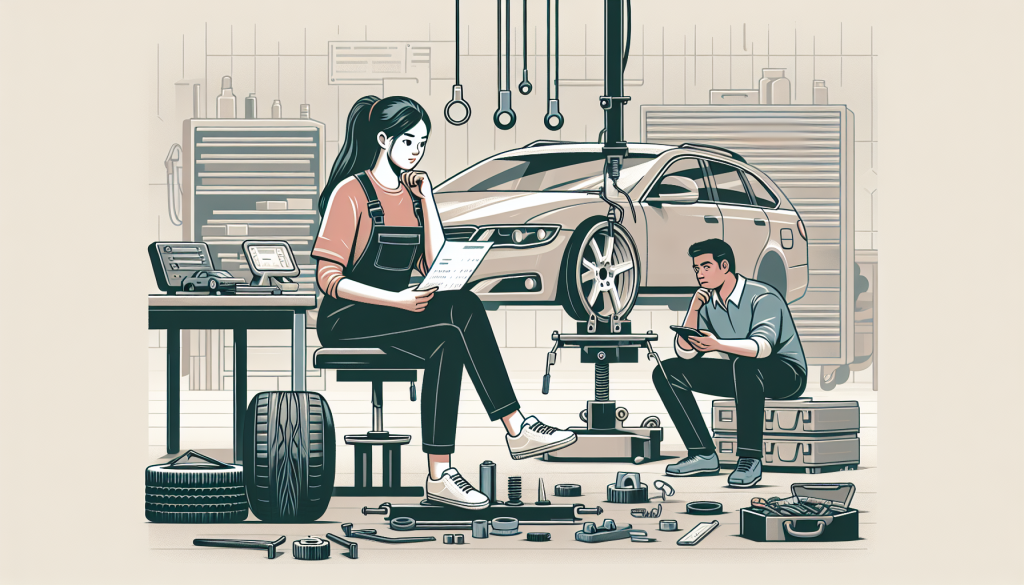Getting the Lowdown on Suspension Alignment Costs
If your car’s wheels are out of whack, understanding the cost of suspension alignment is key. Let’s break down why alignment matters, what affects the price, and why you should always know what you’re paying for.
Why Suspension Alignment Matters
Keeping your wheels aligned isn’t just about driving straight. It helps your car handle better, saves gas, and keeps your tires from wearing out too fast. When your wheels are properly aligned, the camber, caster, and toe angles are just right. This means smoother rides and fewer trips to the gas station. Plus, your tires will thank you by lasting longer. Want more on why alignment rocks? Check out our suspension alignment benefits article.
What Affects Suspension Alignment Costs?
Several things can jack up the price of getting your wheels aligned. Knowing these can help you budget and avoid sticker shock.
| Factor | What It Means |
|---|---|
| Vehicle Type | Bigger rides like SUVs and trucks usually cost more to align. |
| Alignment Type | Two-wheel alignments are cheaper than four-wheel ones. |
| Condition of Parts | If your suspension parts are shot, you’ll need replacements, which adds to the bill. |
| Location | Prices can vary depending on where you live. |
| Shop Expertise | Shops with top-notch techs might charge more, but you get what you pay for. |
| Extra Repairs | Sometimes, fixing alignment issues means fixing other stuff too, which can add up. |
Why You Need Transparent Pricing
Nobody likes surprise charges. Always ask for a detailed quote that breaks down labor, parts, and any extra services. Knowing the suspension alignment process and asking the right questions can save you from unexpected costs. For tips on picking the best service, see our suspension alignment tips.
Understanding these cost factors helps you keep your car in tip-top shape without breaking the bank. Regular checks, especially when you get new tires or notice uneven wear, can prevent bigger problems later. For more on spotting tire wear, visit monitoring tire wear patterns.
Get the Most Out of Your Suspension Alignment
Regular Alignment Inspections
Keeping your car’s suspension in check isn’t just for gearheads. Regular alignment inspections are key to keeping your ride smooth and safe. Catching misalignment early can save you from bigger headaches (and expenses) later. Stick to the recommended schedule to keep your car handling like a dream.
| How Often | What to Check |
|---|---|
| Every 6 months | Basic Alignment Check |
| Annually | Full Alignment Inspection |
| After new tires | Alignment Check for New Tires |
Want more details on when to check your alignment? Check out our suspension alignment service guide.
Why Proper Alignment Matters
Getting your alignment right isn’t just about avoiding that annoying pull to one side. It’s about making your car safer, more efficient, and saving you money in the long run.
- Better Gas Mileage: Less resistance means your car uses less fuel.
- Safer Driving: Good alignment keeps your car stable, reducing accident risks.
- Longer Tire Life: Even wear means you won’t be buying new tires every few months.
Curious about how alignment can make your drive better? Dive into our alignment benefits guide.
Understanding Suspension Alignment Costs
No one likes surprise bills. Knowing what affects alignment costs helps you budget and avoid sticker shock. Prices can vary based on the type of service, how tricky the job is, and where you live.
| Service Type | Average Cost |
|---|---|
| Front-End Alignment | $50 – $75 |
| Four-Wheel Alignment | $100 – $150 |
| Thrust Alignment | $75 – $125 |
Other factors? High-tech tools and the skill of your mechanic can bump up the price. Always ask for a detailed estimate from your alignment shop to keep things clear.
For more tips on saving money and keeping your car in top shape, check out our articles on alignment costs and suspension maintenance.



